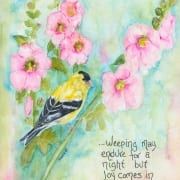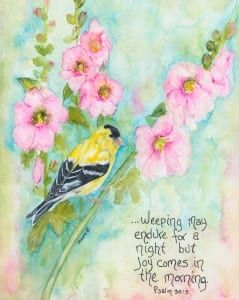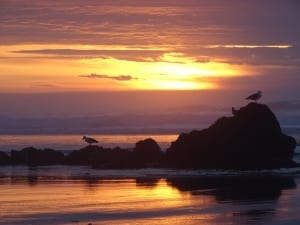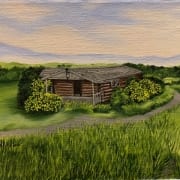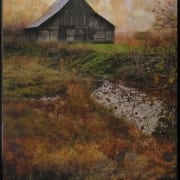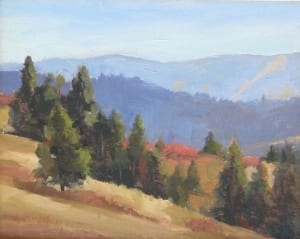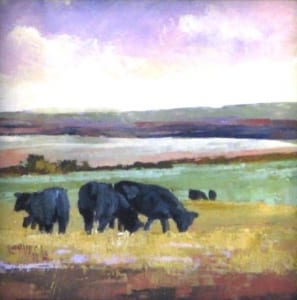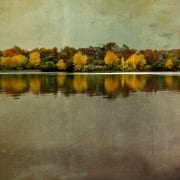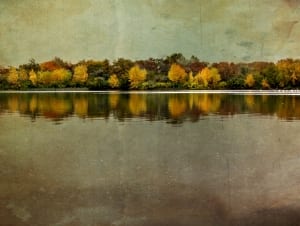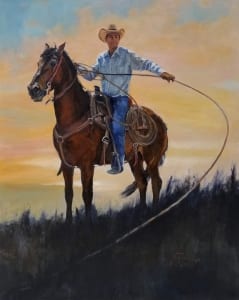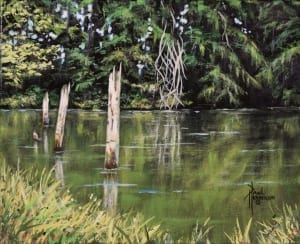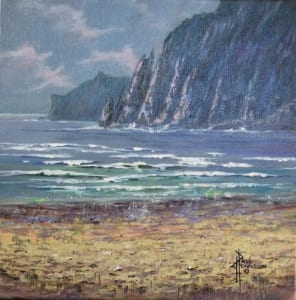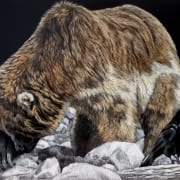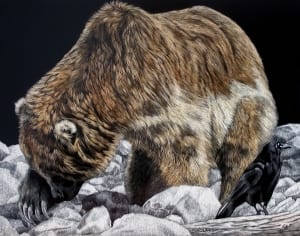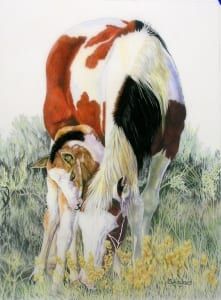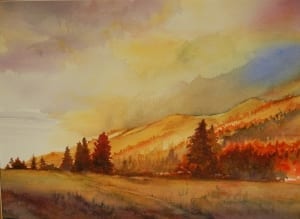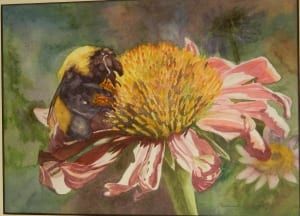Freedom Requires Thinking, and Art Inspires Thinking
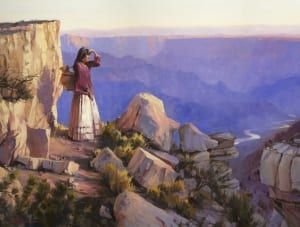
It is the early 20th century, and a Native American woman stops from her daily work and looks back. What does she see? Turning Point, original oil painting by Steve Henderson, exploring the concept of human dignity and freedom
Art takes us places.
I know, this sounds like one of those “branding” statements corporate marketing experts encourage small, independently owned businesses to come up with, as if it will magically make them as big as the big guys.
“Create a catchy slogan, an easy to remember statement that customers will associate with you. Brand yourself.”

Humans love warmth and laughter; when we are together, a fire of friendship burns in our souls. Sunset Fire by Stephen Lyman.
Branding, to me, is what ranchers do to livestock. It sounds rather painful, actually.
But back to the statement, “Art takes us places.” I say this because I mean it.
Art — good art, well executed art, art with a sense of freedom created by an artist who has spent thousands of hours honing skills and is able to convey emotion through pigment on a two-dimensional surface like canvas — takes us places.
Freedom to Not Match the Rug
Now not all art fits this definition, an upsetting concept for some because for years we’ve been taught that just about anything is art, and anybody can do it. To say otherwise is to be offensive. That’s a topic for another essay. But logic tells us that art created primarily to coordinate with the rug on your floor, a concept long propounded by corporate media voices in the design industry, isn’t necessarily going to take you anyplace deeper than your rug.
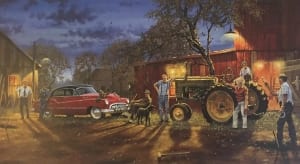
The simple things, the uncomplicated times together — these are the treasures of life. Pitchin for a Double Ringer by Dave Barnhouse
The art I am talking about, the art that takes you places, is representational art — art that shows a recognizable place or person, art that we can look at and say, “That’s a meadow,” or, “There’s a woman standing by the lake.” This art, because it represents a scene that our eyes and minds can readily grasp, has the power to take us to that place.
Again, for years, we’ve been told that this type of art is a lesser art, and art has “evolved” into something greater and more profound, the further away it is jerked from representationalism. True art, we’re told, is edgy, it “makes a statement,” it shocks and offends, or, if not that, it is so deep and esoteric that it takes great insight and intelligence to understand it. The people who say, “I don’t know much about art, but I know what like,” are laughed at, scorned, derided.
Freedom: “I know what I like, and I like beauty”
But those people, the ones who know what they like, have a point. After all, it is their home in which the art will be placed, their eyes who will see it, their hearts who are touched by what they see. Perhaps it is a wilderness scene, deep in the mountains, and when they look at it they are transported, mentally, to a place of deep quiet and beauty.
Or maybe it is an image of a child in a garden, and when they step into the room and see it, they are taken back to their own childhood days. “Things were so simple and pure then,” they muse. “Innocence lost? I’d like to recapture it.”

Artwork invites us into a world of goodness and honesty, and reminds us that such things do, indeed, exist. Lil Dipper by Thomas Sierak
For others, it’s a seascape. “I’d like to be there,” the viewer sighs. “The sea is so beautiful, timeless, majestic. There’s a sense of freedom. There’s no chatter, no push, no constant talking AT me.”
Art Talks to Us, Not AT Us
An artwork on the wall is quiet, waiting for us to be quiet as well. As we look at the image, allowing our eyes to gently rest upon its elements, our mind calms at the same time it opens up to our creativity, our ability to mediate, our need to question and analyze and wonder.
In other words, the artwork on the wall gives us time and scope and opportunity to think, and to think deeply. It holds a unique place in the world of thinking: good literature stimulates; honestly researched non-fiction informs; a well-acted play gives food for thought, but a painting, a picture — that, indeed, is worth a thousand words. And those words stem from our own mind, our own thinking, as opposed to the words of others.
In comparison to talk shows, “news” reports, political analysis, pop entertainment, social media — there is no comparison.
Art Takes Us Places Worth Being
Art takes us places because it takes our mind places, and when our mind goes places, when it is free to contemplate and question, to wonder and analyze, to ponder and deliberate and ruminate, then we, as a people, remain free. People who think deeply and often are not easily fooled.
Art takes us places.
Stay thinking. Stay free.
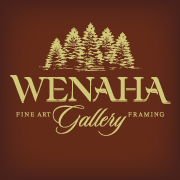 As of March 24, 2020, Wenaha Gallery is one of thousands of independently owned businesses deemed “non-essential” by the governor of the State of Washington. Our physical premises are mandated closed for an unknown period of time determined by the governor. Our Art Events, therefore, are suspended until we are given permission to reopen. We ask that you give your support to the small businesses with your encouragement and dollars. We are available online 24/7 at wenaha.com, and carry an extensive selection of original art, art prints, and gifts. Our gallery associates are available to take online orders, answer emails and phone messages, and communicate with you via phone, email, or social media.
As of March 24, 2020, Wenaha Gallery is one of thousands of independently owned businesses deemed “non-essential” by the governor of the State of Washington. Our physical premises are mandated closed for an unknown period of time determined by the governor. Our Art Events, therefore, are suspended until we are given permission to reopen. We ask that you give your support to the small businesses with your encouragement and dollars. We are available online 24/7 at wenaha.com, and carry an extensive selection of original art, art prints, and gifts. Our gallery associates are available to take online orders, answer emails and phone messages, and communicate with you via phone, email, or social media.
Contact the gallery, located at 219 East Main Street, Dayton, WA, by phone at 509.382.2124 or e-mail art@wenaha.com. Gallery hours during normal times are 9 a.m. to 6 p.m. from Monday through Saturday, and by appointment. Visit the Wenaha Gallery website online at www.wenaha.com.


